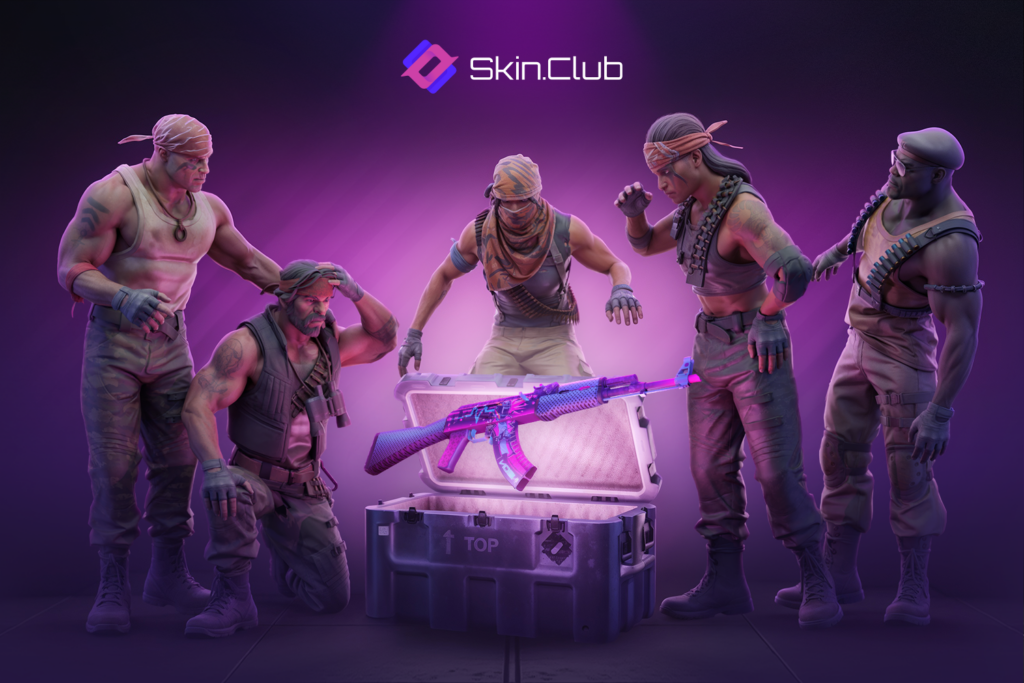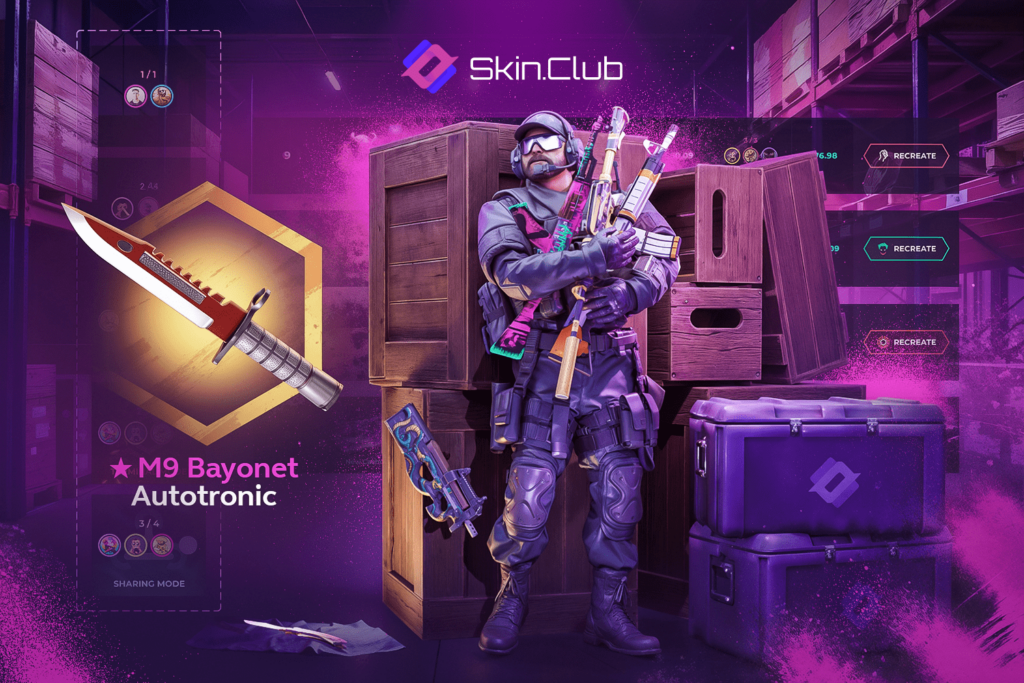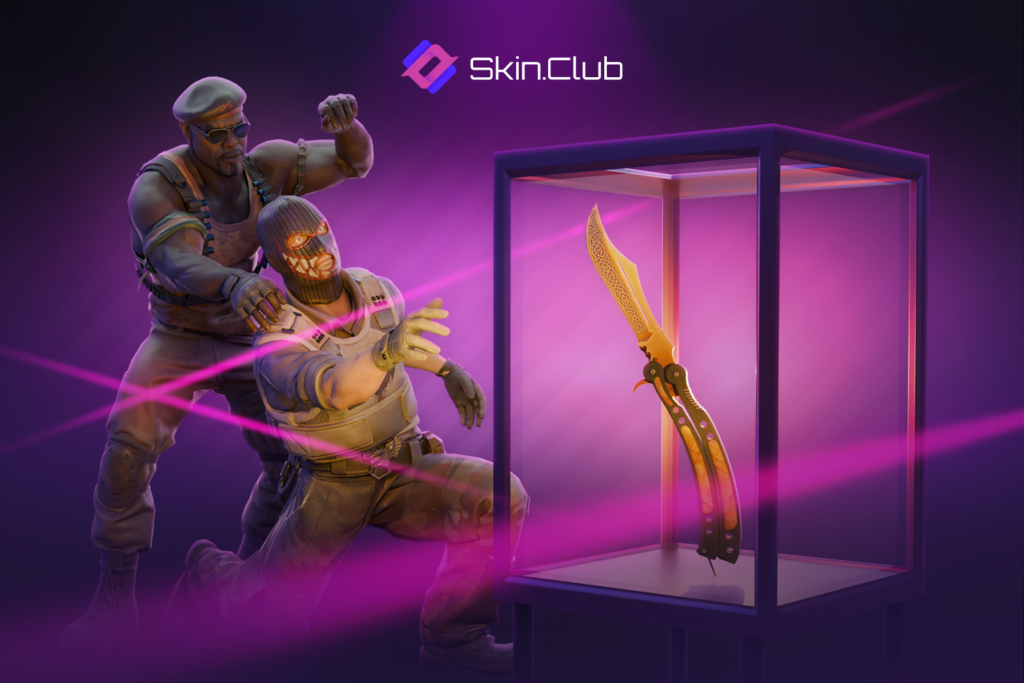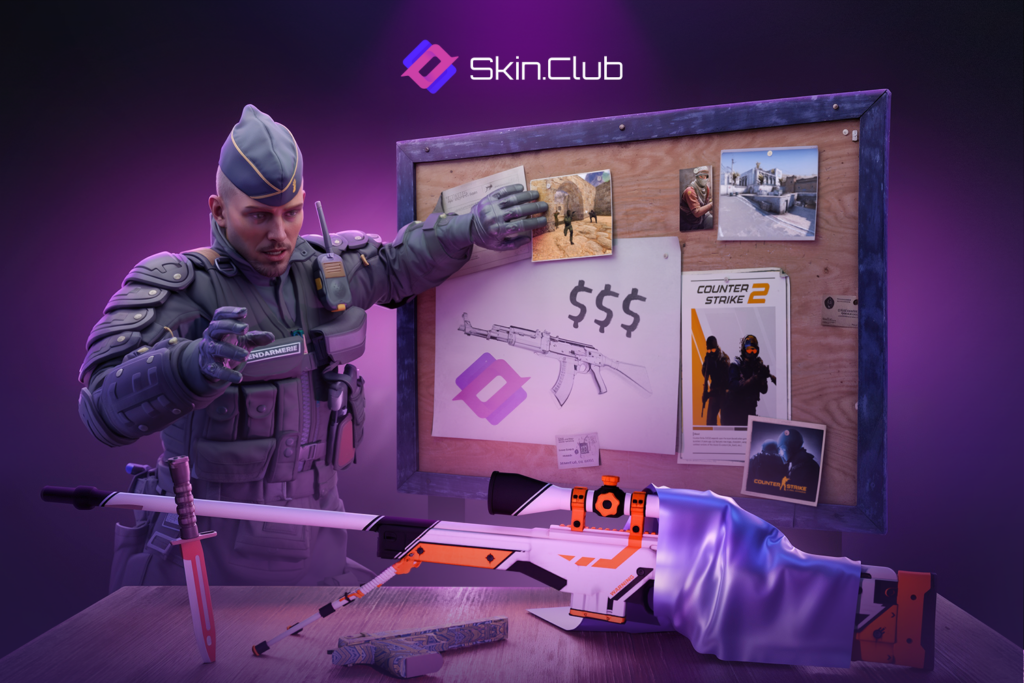
On August 14th, 2013, game developer Valve introduced aesthetic weapon enhancements that would fundamentally alter their flagship game, Counter-Strike: Global Offensive (CS:GO) forever. The game was released to the public just shy of one year earlier, but this now infamous Arms Deal Update introduced the first collection of 18 weapon skins — unique, purely cosmetic textures which can be equipped in-game — though offering no gameplay benefits.
But they did offer an intangible benefit to the ultra-competitive online tactical shooter.
Swag.
Cosmetic items in games would go on to add rich layers of cultural capital into online gaming writ-large over the next decade, but CS:GO’s unique approach would create a new phenomenon in the industry — and a new opportunity.
A host of new and engaging reward mechanics would stimulate skin’s disbursements among the player base, including a variety of ratings for each skin to maximise the collectible element, that the community would immediately both embrace and love to hate.
Timed item drops would create a random and purely chance-based system. Players could elect to open new Standard or Esports Weapon Cases (both with unique skin collections) by purchasing the relevant keys in randomized reward experiences.
Ground-breaking at the time, a portion of the Esports Weapon Case Key sales would go to funding prize pools for community CS:GO tournaments, a practice that would go on to become commonplace in esports.

In perhaps the most consequential introduction of the Arms Deal Update, players could trade and purchase skins (or Case Keys) directly from the Steam Community Market, in a now ubiquitous micro-transaction model. This created a virtual economy around CS:GO, in which players would transact via Steam Wallet funds (topping up using real-world currency) and Valve taking 5% of each transaction.
Another game-changing opportunity was nearing the surface, though this would happen completely out-of-game.
The market would dictate the price of items from what players were willing to pay, accounting for the prescribed rarity, community desirability and personal taste — leading some to eventually become highly valuable.
Valve would regularly introduce new themed collections into the game, suites of weapon skins sharing an aesthetic across the game’s dozens of weapon types. Each new collection drop could have a window of availability, allowing players to acquire them organically for a limited amount of time, after that, they would only be available on the Steam Community Market.
Intrepid secondary markets began to immediately emerge to facilitate off-Steam transactions, sidestepping the Steam Wallet ecosystem, for cash.
Skin exchanges would eventually grow into a multi-million-dollar industry, introducing a variety of market dynamics. While the marketplace initially faced challenges such as inconsistent rating systems and unreliable transactions, the industry has since evolved with many platforms adopting transparency and fairness as core principles.

A great portion of the community became immediately and vocally tired of the misleading sites. There had to be a better way. Trust and transparency were the biggest frustrations, not unlike almost any nascent marketplace, but ideas of a better way were already forming.
By the end of the year, the active player count had doubled from the Arms Deal Update in August 2013, sitting at around 100,000. That number would more than triple by August 2014. Over the next five years, the peak concurrent player base would fluctuate until finally breaking 1 million in March 2020.
It was just before this milestone, in mid-2019, that Skin.Club was launched. Born from former pros and lifelong passionate CS-heads believing that fairness, transparency and community-driven innovation were key to unlocking a truly innovative service in the ‘skin game’.
The Skin.Club team believes that skins are a vibrant thread in the historical and cultural fabric of Counter-Strike and its esports communities. Each skin holds a story, a memory of remarkable moments, a symbol of personal achievements, or even a token of loyalty to a favourite team.
Skins have transcended their functional purpose to become collectibles that embody creativity, identity and the shared spirit of competition.
From this ethos, the site would add a number of unique features over the years, like mirroring the experience of opening Weapon Cases by recreating their own version on the website with uniquely themed case collections. Like Skin.Club-only case collections inspired by currently popular anime like Bleach, One Piece or DanDaDan.
Each case displays every available skin within it and the historical odds of winning each item.
Because the site was born in front of the community, it aimed to stay connected to it beyond delivering a reliable product. Players would have the unique opportunity to contribute ideas, suggest improvements and directly impact how the platform evolves.

The model has proven fruitful. Today, whether through voting on new features, submitting feedback or participating in surveys — Skin.Club embodies a collaborative model ensuring every update introduced reflects the needs and desires of the community, which has grown to be the largest of all skin-devoted platforms.
Beyond pure esthetics, skins drive a unique economy in esports — enabling collaborations, sponsorships and community-driven innovations. One such feature is case battles, turning opening cases into a competitive luck-of-the-draw, winner-takes-all showdowns.
Players take turns ‘pulling’ skins from a case. Each skin and its dollar amount is revealed, with the cumulative total only being revealed at the end of a preset number of rounds. The total value of each player’s ‘drop’ is revealed and the player with the most value wins the whole pot of drawn skins.
For endeavors like Skin.Club, cosmetic items represent more than just a bridge between the technical skill and emotional art of the game’s fanbase. Skins connect players, teams and fans with their unique designs and the memories attached to them. Skins represent passion, value and demand.
Skin.Club’s mission extends far beyond case opening — it’s about supporting teams, entrepreneurs, esports enthusiasts, and the broader esports ecosystem.
By celebrating the artistry and cultural significance of skins, Skin.Club aims to elevate their value — not only as a cornerstone of the player experience but as a timeless emblem of the gaming journey. Skins are a testament to the legacy of Counter-Strike and a crucial element propelling esports into the future.
Discover the future of skin-opening experiences at Skin.Club — where fairness, innovation, and community meet.

